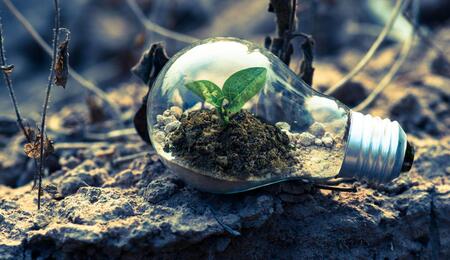Industry Impact: Is cannabis bad for the environment?

Not to bum you out, but that joint you’ve just smoked is not as ‘green’ as you want it to be. In fact, that joint is likely worth two pounds of carbon dioxide emissions. Yes, getting high has some negative environmental consequences. Should you feel guilty about smoking that joint? Stay at ease. There are far more toxic behaviours.
It turns out, just like everything else that is good and loved by consumers, cannabis too is somewhat bad for the environment. The recent unprecedented boom of the cannabis industry also known as the “green rush,” results in a number of environmental downsides. Below are some of them. Is cannabis bad for the environment?
Pot’s appetite for energy is quite problematic
For one, pot is a power-hungry beast. Weed growers use roughly $5 billion worth of electricity to power fans, dehumidifiers, lightbulbs and everything else it takes to grow weed. In fact, 3 percent of California’s total spend on electricity is designated for indoor pot cultivation power needs. According to a study by the Lawrence Berkeley National Laboratory, indoor marijuana-growing operations make for whooping 1% of the total electricity use in the United States, at a cost of $6bn per year.
"One misperception that folks have is that growing cannabis indoors means they get off without a hitch in regards to the environment," Jennifer Carah, a senior freshwater ecologist at the Nature Conservancy in California, said. "That's not really the case." Pot’s appetite for energy, leads to the production of 15m tons of greenhouse gas emissions (CO2), per year, which for instance equals that of three million cars.
Not so ‘green’ indeed
Speaking of which, marijuana cultivation also contributes to deforestation, as we're butchering down trees to make a place for outdoor growing operations. In a 2017 study, researchers found that marijuana cultivation is harmful and hostile to the landscape and surrounding habitat.
Researchers monitored the environmental cost of cannabis cultivation, by comparing them to those of timber harvest for ten years. Compared to timber, marijuana harvest causes 1.5 times more deforestation and 2.5 times greater fragmentation of the landscape, breaking up the large, contiguous forest into smaller patches. Moreover, rat poison and pesticides that cultivators use to safeguard their cannabis plants from pests are lethal for the wildlife habitat.
For example, a recent study found that 85 percent of Pacific fisher--a cat size weasel-like creatures--in the Sierra Nevada range were exposed to poison which resulted in 10 percent of all deaths of the endangered species. These problems can be avoided though if you move your growing operation into a greenhouse that requires electricity for humidity control, ventilation and lights, which is again somewhat problematic.
Pot is a thirsty sucker
To add to your guilt trip, weed is also one thirsty sucker. Large operations use something close to billion liters of water per square mile over a growing season. According to a 2016 study, a single weed plant can suck up roughly 23 liters of water per day, compared to 13 liters of water needed for a wine grape plant.
To put things more into perspective, it takes about four gallons of water to run an energy-efficient dishwasher. The water factor is especially notable in dry regions and hot seasons, which due to climate change we are likely to see extended.
Your green friend is quite the polluter
Apart from the trespass crops that are causing environmental problems, the cannabis industry is almost lethal for the air quality and it contributes to air pollution. Since weed became legal in Colorado in 2014, emissions from the almost 700 cultivation facilities are polluting the air in Denver.
According to William Vizuete, associate professor at the University of North Carolina’s Gillings School of Public Health, the cannabis plant creates volatile compounds that introduce harmful pollutants known as VOC. Cannabis plants produce potent VOCs known as terpenes that, when combined with sunlight and nitrogen oxide, develop ozone-degrading aerosols.
High levels of VOCs have been linked to a range of human health issues, from fatigue and nausea to cancer and liver damage. While it's a green revolution with quite not so green consequences, legalizing weed can aid the environmental loopholes, as illegal operations would be far more regulated and it would make sure streams and fish won't be damaged by extended withdrawals for irrigation.
Even though marijuana has many environmental downsides, you should not feel bad for enjoying that joint. There are far more serious and toxic behaviours like air travel, consuming factory-farmed meat or driving SUVs, just to name a few. And anyway, if you want to protect the environment from your appetite for weed, you can always go homegrowing and cultivate your own plants.



